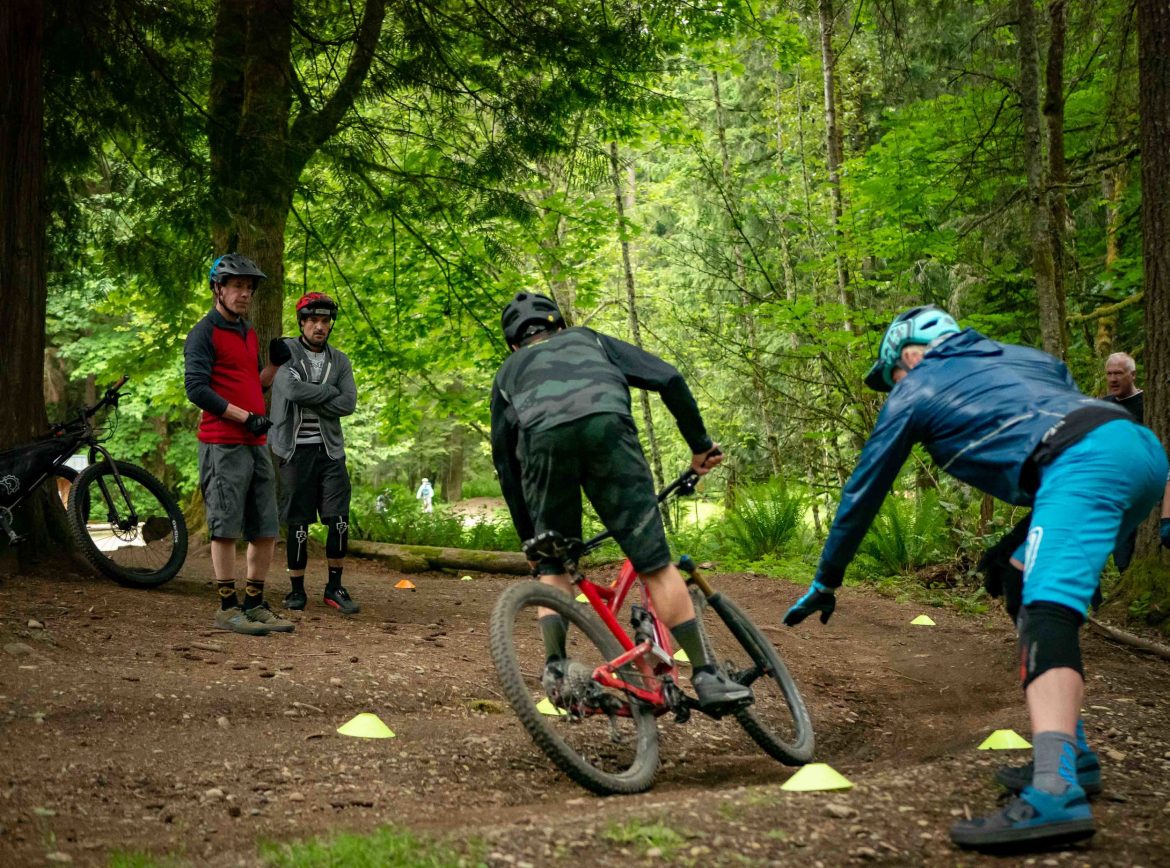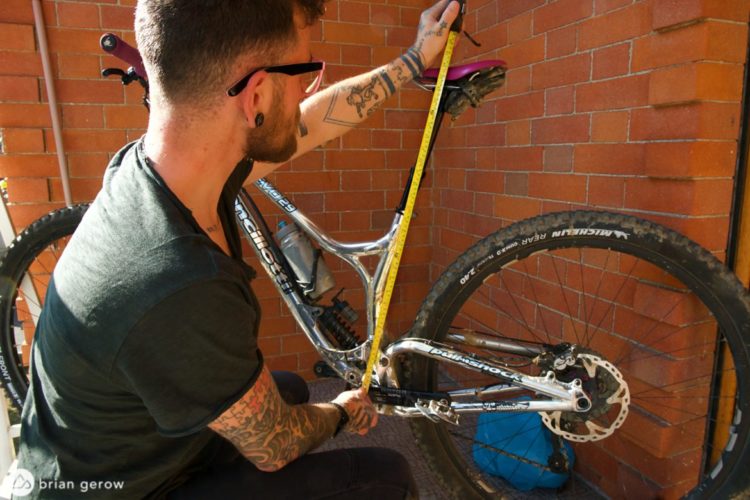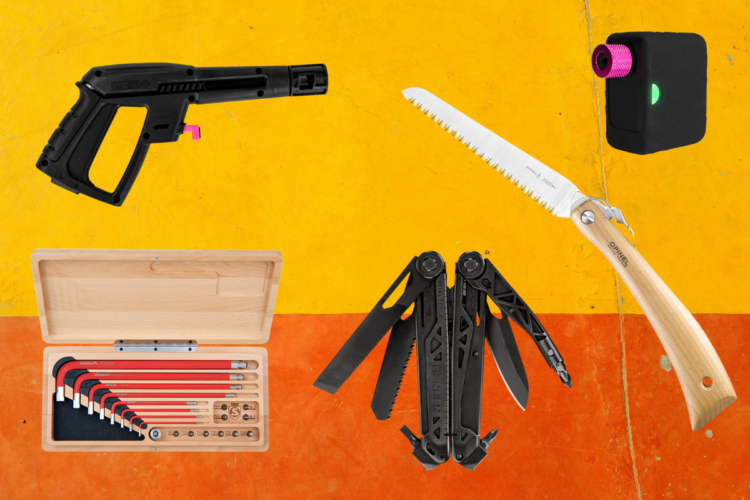
“Mountain bikes have never been so good,” write the authors in Pro Mountain Biker. “It seems likely that the 1990s will prove to be the decade in which full-suspension bikes are refined to near perfection.” Judging by all the ways mountain bikes continue to be refined and improved, three decades later and we still aren’t quite there.
Of course the authors weren’t wrong to say that mountain bikes had never been so good; in fact, many of us are saying the same thing today, and we’re not wrong either. Progression is a journey, not a destination, and as riders we continue to benefit from countless innovations that have made mountain bikes ever more capable.
Following a conversation with mountain bike skills instructor Simon Lawton on the Singletracks podcast, I wondered: What makes today’s mountain bikes so much more capable than those from ten or even just five years ago? To answer that, I’d first need to first define what it means to say that a bike is capable.
Capability, defined
Mountain bike: (noun) a bicycle designed for off-road cycling1.
Capable: (adjective) having the ability, fitness, or quality necessary to do or achieve a specified thing2.
By definition, if a bike can be ridden off road, it’s a capable mountain bike. Of course that’s an extremely low bar, and mountain bikers expect so much more out of their bikes than just the ability to successfully ride over dirt and rocks.
Pivot Cycles President and CEO Chris Cocalis for one defines mountain bike capability more specifically, saying today’s mountain bikes should allow us to “ride harder, more technical terrain faster and/or more confidently.”
“I think the term ‘capable’ represents a bike’s ability to cover a broader style of riding or broader types of terrain,” adds veteran pro rider Jeff Lenosky. “For mountain bikes, ‘capable’ might refer to a bike that can climb and descend well […].”
Just like our smartphones, today’s bikes are clearly much more capable than they were in the past. And everyone, from pros to Joes, is seeing the benefit of progressive mountain bike design.
“A perfect example of this is to look at footage of a World Cup downhill race 10 years ago vs. today,” says Transition Bikes’ Lars Sternberg. “Riders like Minnaar, Peaty, or Flo Payette looked like they were riding kids’ bikes. I’d wager if you asked them if they were able to ride the exact same track in the same conditions if they would go faster and feel more confident on their current bikes the response would be a resounding yes.”

Innovation
Four years ago, I posed this question to Singletracks readers: What is the biggest mountain bike innovation of all time? Responses included the usual suspects like better tires and brakes, dropper posts, and improved suspension. Of the big four, Lenosky singles out dropper posts, which he suggests unlocked all the other innovations we’re seeing.
“The biggest innovation was the dropper post, that allowed bikes to have longer travel suspension yet still be rideable, since you could get a decent saddle height for climbing and still be able to drop your saddle low enough to take advantage of the travel.
“Once that floodgate opened it pushed the industry to refine geometry and shock performance which led us to the amazing bikes we have today. Long travel, flat pedals, even E-Bikes wouldn’t be possible or at least nearly as fun without dropper posts.”
As Lenosky hinted in his definition of capability, bikes — in particular trail bikes — should be comfortable and efficient for both climbing and descending. The magic of dropper posts is that they essentially allowed designers to deliver two bikes in one. Consider that dedicated downhill bikes often don’t include dropper posts since they are only focused on one side of the equation. And at the other end of the spectrum, today’s top-of-the-line cross-country race bikes like the Scott Scale RC 900 still ship with fixed posts.
If dropper post adoption was a revolution, mountain bike geometry has undergone more of an evolution, though arguably the changes have been just as impactful. Of course it’s hard to separate geometry from dropper posts, since the two work hand in hand. But improved geometry isn’t just about seat angles and ride height.

“That’s one of the things that I think, as a coach, has become a stabilizing force, of the layout of modern bikes,” says Lawton. “I would say suspension has come a long way, brakes have come a long way, like all that stuff. But really angles, and lengths, and all the engineering that has gone into bikes is really what’s changed them the most.”
Cocalis agrees that things like longer reaches, slacker head tube angles, and wider bars are a big part of what makes today’s bike so much more capable.
Starting with modern bikes’ descending capabilities, it’s clear geometry today is much improved.
“There really is a lot of room on modern bikes to move, and there really is a nice sweet spot, and it is easier to maintain your space over the bottom bracket,” according to Lawton. “And then just the idea of how much further behind the front axle your hands are is really interesting when you think about it. Like if you think about being on flat ground on an old cross-country bike your hands are in front of the front axle so when you go off a curb, you feel like ‘oh my gosh, I’m about to go over my handlebars.’ Now our hands are like, on a modern enduro bike, four or five inches behind the front axle. So you have to get on a pretty steep pitch before your hands even line up with the axle level, let alone you get in front of the front axle.”
And on the climbing end, modern geometry comes into play as well.
“A steeper seat angle on modern suspension bikes gets riders in a better pedaling/climbing position,” says Cocalis. “Riders in certain terrain started realizing that they were in a better climbing position with a steeper seat angle. [A steeper seat tube angle] also proportionately shortens the top tube putting more rider weight on the front end, which is needed to keep bikes with really long reach measurements from pushing/washing out in corners.”

Capable bikes make capable riders
Of course bikes don’t deserve all of the credit; mountain bikers today are also very capable, perhaps even more so than our bikes, which is ultimately what drives riders and designers to build better bikes.
Lawton suggests that a decade or two ago, mountain bike designs were holding us back from descending more confidently and comfortably. “To get back, we just had to get our butts back and kinda hope for the best. They just weren’t very well designed.”
Even professional riders are seeing progressive design benefits, as Sternberg suggests and Lenosky confirms.
“[Geometry changes have] allowed me to ride faster and safer than ever before. My riding style has changed since I’m now able to ride the tech stuff that I love as well as bigger hits [and] faster lines all on the same ride on the same bike. I definitely ride steeper, sketchier terrain on ‘normal’ mountain bike rides than I would have years ago.”
Sources: 1. Wikipedia. 2. Oxford Languages.
Show your Support
Become a Singletracks Pro Supporter today and enjoy benefits like ad-free browsing.
With your support we can provide free worldwide trail information and original content created by our team of independent journalists.





















15 Comments
Mar 18, 2021
As for dropper posts, Joe Breeze, designer and builder of the first custom MTBs,
designed and sold the HiteRite, a simple spring device that allowed height adjustment on the fly, also many years ago... Bicycle design has been very similar for many many years...
Mar 18, 2021
Though I have a confusion due to ignorance or a disagreement based in logic: the dropper post seems to me nothing more than a time-saving device, keeping the rider on the pedals rather than (diligently) stepping off, adjusting the quick-release seat height, and proceeding again. Is my intuition correct (time saving & greater enjoyment in the transitions, merely), or is there something meta-important about the dropper post "unlocking all the innovations..."?
Again, in the spirit of growing/learning/conversing.
Jan 4, 2022
Mar 18, 2021
Mar 19, 2021
Any thoughts?
Mar 19, 2021
My original thesis for this story was that geometry by itself is the biggest innovation that's made bikes so capable, but after talking with folks it was clear dropper posts were a big, if closely-related, part as well. It really is hard to separate any of the factors since they all go hand-in-hand, but the way I see it, dropper posts are the thing that allowed designers to finally make many desirable changes to geometry because the seat location could be in one spot for climbing and another for descending.
Optimized geo for climbing has been mostly settled (see road and XC bikes) and also for descending (see DH bikes) where droppers aren't as widely used. It's the do-all trail/enduro bikes where geo is really being tweaked to take advantage of droppers on the order of a degree or more every couple of years to find an ever sweeter spot.
Mar 19, 2021
A few years ago, I experienced what Bowensare suggested, that the dropper-post was such a marvelous innovation per se that it appeared to make most of the difference for me, (a basic weekend warrior rider), and I overlooked how it had also inspired changes in new geometries. I "experimented" w/ this when adapting a dropper post to my '98 Specialized Rockhopper hardtail and comparing the ride experiences to the newer geometry on my Stumpjumper.
Again, "Thanks!" for sparking new thoughts -- very much appreciate your impact on my interest in bike tech & trails.
Sep 20, 2021
Back in the 90's I had a Giant ATX750 hardtail rocking the ever terrible RST 381 fork. It had a 110mm stem, a flat bar and some bar ends. I think I managed to squeeze some Tioga 2.1's into that frame and had a blast. Fast forward to 2021 and I have a Giant Trance and a Norco Gravel Bike, I can run bigger tyres (tubeless), and have dual suspension and ride over everything or go old-school and run a full rigid roadie experience and have to pick and choose my lines.
Different tracks call for different bikes but I have just as much fun on either bike.
I'd say the biggest influence has to be Chinese manufacturers and subsequent reduction in cost of technology. The technology that is available to me at a cheap price point is astounding.
Mar 25, 2021
I'd like to pose the theory that the 1x drivetrain much like the dropper post, is responsible for a lot of the change in modern bikes. By ditching the front derailleur that has allowed designers to be able to be much more creative with both geometry and suspension layout. Chainstays can get shorter or longer, the seat tube can go wherever it needs to and a shock/linkage can live where the front derailleur needed to.
The 1x drivetrain is solely responsible for the current suspension layout on all Santa Cruz bikes for example, since the front derailleur was the only thing holding them back for years and years. The v10 (and driver 8) was their only lower link driven bike for a long time because it was the only one that didn't need a front derailleur.
Feb 1, 2022
2 decades ago I was putting a 50mm stem on my mountain bike, hardtail, and getting a frame size a little big just so my hands were not over or past the front axle. I rode and still do ride BMX. I hated how mountain bikes rode in the 90s when I started getting into it.
Around 2003 I found an On One Inbred (UK brand) in 16" frame (low stand over) and a 23" top tube. Unheard of back then. I put my 50mm stem on that bike and shredded it for about 6 years straight, still little to no change in geometry back then. Short top tubes and long stems.....WTF!
To this day I have no idea why it took the bicycle industry soooo long to change geometry and size bikes like BMX bikes, by frame length....not seat tube height.
The dropper post forced that change...... finally!! Like hey, we need low seat tubes to fit a dropper so let's size our frames be effective top tube and reach! Oh, and they need to be longer! A lot longer.....with short stems!
I swear, the bicycle industry has only recently figured this out. They were too focused on how a bike shifts I think......ugh.
Dec 11, 2021
Mar 20, 2021
STA can make or break a ride if it doesn't work with the rider... Not one of us is made from a blueprint and therefore each has their preference here.
Bar width and stem length are rider determined fitment items.
Reach, partly in frame design and partly coming from the previous statement.
Crank length, based on rider fitment.
Proper design of suspension to eliminate pedal input from the scene has come forward, leaps and bounds!
There is the custom frame option for those that know what their needs are. These allow for unlocking the rider's powerband as well as bike handling in general. The consequence of getting it wrong is expense and requires a great deal of understanding.
Sentientcalifornian pointed out the mose efficient and lightest weight, creakless, wiggle free dropper in history. They were not absurd in price either!! Joe has been a good influence in dirtin' for many decades.
Mar 28, 2021
I have to believe that while the cost of Aluminum may have been cheaper a decade ago, the equipment used to fabricate and weld it in mass must have been astronomical. But today China has solved that problem. Foxconn and others can scale up quickly to meet demand and the cost to do so is neglible vs a decade ago.
Mar 28, 2021
Asking for a friend
Mar 18, 2021